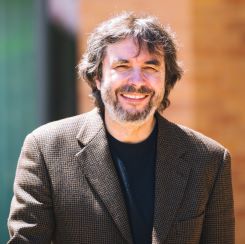
I recall a memorable catchphrase I often encountered while driving long distances during the Christmas season a few years ago: Jesus is the reason for the season. This simple yet profound truth, encapsulated in the song of the same title recorded by the renowned Gospel musician Kirk Franklin in 1995, inspires millions to partake in the immense joy and beauty of Christmas. The season’s uplifting message unites people in celebration and hope.
Yet, the story of the Nativity is not without its challengers. Many seek to limit its impact, distort its meaning, or deny its transformative message altogether. At the heart of these challenges lies the critical question: Who is Jesus to each of us?
While some outright reject the true meaning of Christmas, there are subtler distortions of Jesus’ Person that pose a more insidious danger by misleading unsuspecting Christians. To help navigate these challenges, I offer a brief exploration of key “schools of thought” that have emerged over time, challenging the essence of Jesus’ identity
1. Complete Denial
A relatively recent phenomenon. Interpretations asserting that Jesus was just a legend, not a historical figure, started to emerge in big numbers in the 19th century. Representative books that attempt to “cancel” the historical Jesus are Earl Doherty’s The Jesus Puzzle, and Kenneth Humphreys’ Jesus Never Existed. As it was in a case of Yuval Harari, about whom I recently reflected upon, these authors, purporting to speak on behalf of science, claim that their radical views are just “objective facts.” In this context, it is helpful and almost amusing to confront those claims with a reaction of a true scholar. I refer here to the New Testament expert of international reputation, Professor Bart D Ehrman, Distinguished Professor of Religious Studies at the University of North Carolina. Ehrman, characterizing Doherty’s book, wrote that it is “filled with so many unguarded and undocumented statements and claims, and so many misstatements of fact, that it would take a 2,400-page book to deal with all the problems.” Scholarly critics of Humpreys’ book point out his frequent inaccuracies, overly broad generalizations and ignoring many pieces of evidence brought by scholars. In fact, there is a concensus among researchers that the historicity of Jesus is beyond doubt, although only two facts pertaining to Jesus’ life are considered as historically proven: his baptism and his crucifixion. The often-quoted evidence includes non-Christian sources, such as Testimonium Flavianum by Jewish historian and Galilean military leader Josephus and The Annals by the Roman historian Tacitus.
2. A Revered Human, But Not Divine
Some of the most important non-Christian religious traditions, such as Buddhism and Islam, view Jesus as a remarkable human figure—a wise teacher or prophet—but deny his divinity. These perspectives, while respectful, fall short of recognizing the fullness of Jesus’ Divinity, as Christianity understands him. Similarly, early Christian heresies distorted Jesus’ nature in ways that parallel these views:
- Ebionitism: This Jewish-Christian sect regarded Jesus as a mere human prophet, rejecting the Virgin Birth and insisting on adherence to Jewish law.
- Adoptionism: This belief held that Jesus was born entirely human and became divine only through his exemplary life, as if “adopted” by God.
3. Denial of the Trinity
Other heresies misinterpreted Jesus’ relationship with the Father and the Holy Spirit:
- Patripassianism: this view, also called modalism, claimed that the Father, Son, and Holy Spirit were not distinct persons but mere “modes” of one God. It suggested that the Father himself suffered on the cross.
- Arianism: this heresy argued that Jesus was created by the Father, making him subordinate and not of the same substance as God. In this view, Jesus is something akin to Superman.
4. Denial of Jesus’ Humanity
Some heresies denied Jesus’ humanity altogether:
- Docetism: This belief claimed that Jesus only appeared to have a human body and did not truly suffer on the cross. His humanity, according to this view, was an illusion.
5. A Divided Jesus
Certain views fragmented Jesus’ divine and human natures:
- Nestorianism: This heresy taught that Jesus’ divine and human natures existed as two separate persons, rather than existing together in the One Divine Person of the Son of God.
Embracing the True Jesus
Throughout history, countless attempts have been made to redefine, diminish, or distort Jesus’ identity. The energy devoted to finding “third ways” or outsmarting divine revelation is truly astonishing. Yet, amid all this, Jesus remains steadfast, inviting us to encounter him as the true Savior of the world. In the mystery of the Nativity, we meet the Son of God, who humbly entered our world as a child, and our brother, who willingly laid down his life for our sins. May the Holy Infant bless you and your families this Christmas season.
Merry Christmas!

Andrzej Zahorski is Director of Music at St. Anselm Parish in St. Louis, MO. He holds a doctorate of musical arts from Stanford University.